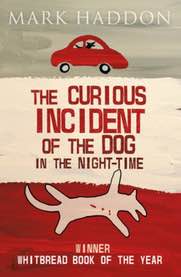The Curious Incident of the Dog in the Night-Time
 Mark Haddon
Mark Haddon
Re-reading this to do a book guide for Book Clubs in Schools reminded me what a great read it is. Starting with Christopher’s discovery of a dead dog in his neighbour’s garden, it is ostensibly the story of him solving the mystery of who killed the dog. It is however as much about unravelling the mystery of how adults in Christopher’s life behave and how they respond to his autism. Told from Christopher’s perspective, it is an insight into how the world can appear very different to someone with autism and also the very real (and human) challenges of parenting a child with special needs.
There is lots of scope for discussion, both in terms of the way the book is written and its content. The choice of Christopher as the narrator – who finds it difficult to empathise with other people – has the counterintuitive effect of making you think more about the perspectives of other characters. Some readers will be absorbed with the diagrams and maths problems, while others will skim over them, which plays into discussing Christopher’s response to being told he likes maths because it is ‘safe’. It is unconventional as a mystery book, in that the main mystery is solved by the middle of the book, and so raises questions about the genre and the norms of detective fiction as framed by Christopher’s favourite detective, Sherlock Holmes. While some people have (rightly) challenged its portrayal of autism – arguably a cliché of a socially awkward maths genius – it stands as a depiction of how someone who finds social interaction difficult and is hypersensitive to noise and touch experiences the world and challenges the reader to think about how they react to people who don’t confrom to behavioural norms.
It is a genuine crossover book for children and adults (and unusually was published simultaneously in children’s and adult’s editions). So long as you are not squeamish about the occasional swear word, it is a funny, emotional and thought provoking read for mature 10 year olds right through to adults.
While some details do date it (who can remember when they carried an A to Z everywhere in London?) I think this is future classic and should be a staple on every secondary school reading list.
It is of course also a fantastic play – information about the latest performances can be found here and Frantic Movement (the movement directors for the play) have produced a resources pack for schools (14+) which can be downloaded here.
